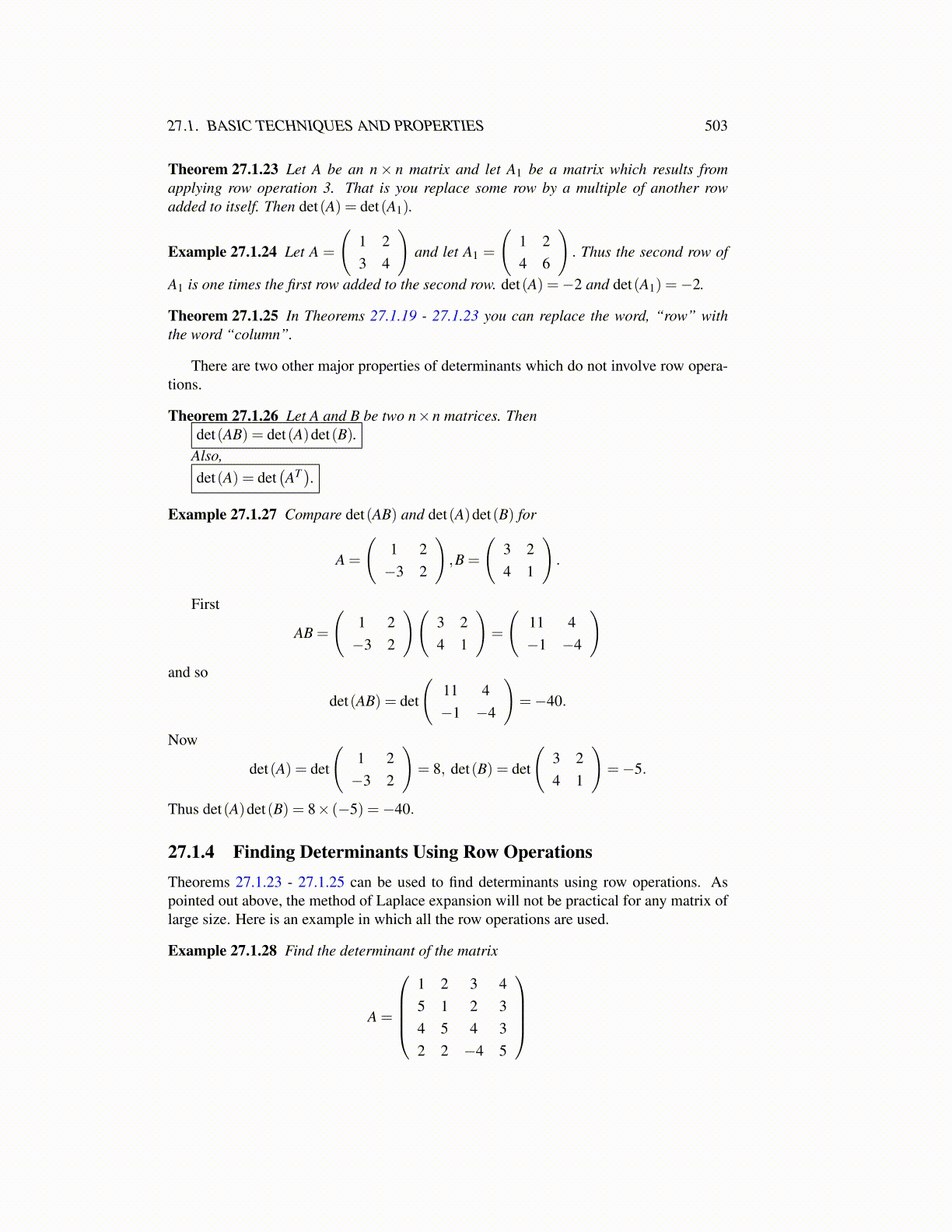
27.1. BASIC TECHNIQUES AND PROPERTIES 503
Theorem 27.1.23 Let A be an n× n matrix and let A1 be a matrix which results fromapplying row operation 3. That is you replace some row by a multiple of another rowadded to itself. Then det(A) = det(A1).
Example 27.1.24 Let A =
(1 23 4
)and let A1 =
(1 24 6
). Thus the second row of
A1 is one times the first row added to the second row. det(A) =−2 and det(A1) =−2.
Theorem 27.1.25 In Theorems 27.1.19 - 27.1.23 you can replace the word, “row” withthe word “column”.
There are two other major properties of determinants which do not involve row opera-tions.
Theorem 27.1.26 Let A and B be two n×n matrices. Thendet(AB) = det(A)det(B).
Also,det(A) = det
(AT).
Example 27.1.27 Compare det(AB) and det(A)det(B) for
A =
(1 2−3 2
),B =
(3 24 1
).
First
AB =
(1 2−3 2
)(3 24 1
)=
(11 4−1 −4
)and so
det(AB) = det
(11 4−1 −4
)=−40.
Now
det(A) = det
(1 2−3 2
)= 8, det(B) = det
(3 24 1
)=−5.
Thus det(A)det(B) = 8× (−5) =−40.
27.1.4 Finding Determinants Using Row OperationsTheorems 27.1.23 - 27.1.25 can be used to find determinants using row operations. Aspointed out above, the method of Laplace expansion will not be practical for any matrix oflarge size. Here is an example in which all the row operations are used.
Example 27.1.28 Find the determinant of the matrix
A =
1 2 3 45 1 2 34 5 4 32 2 −4 5